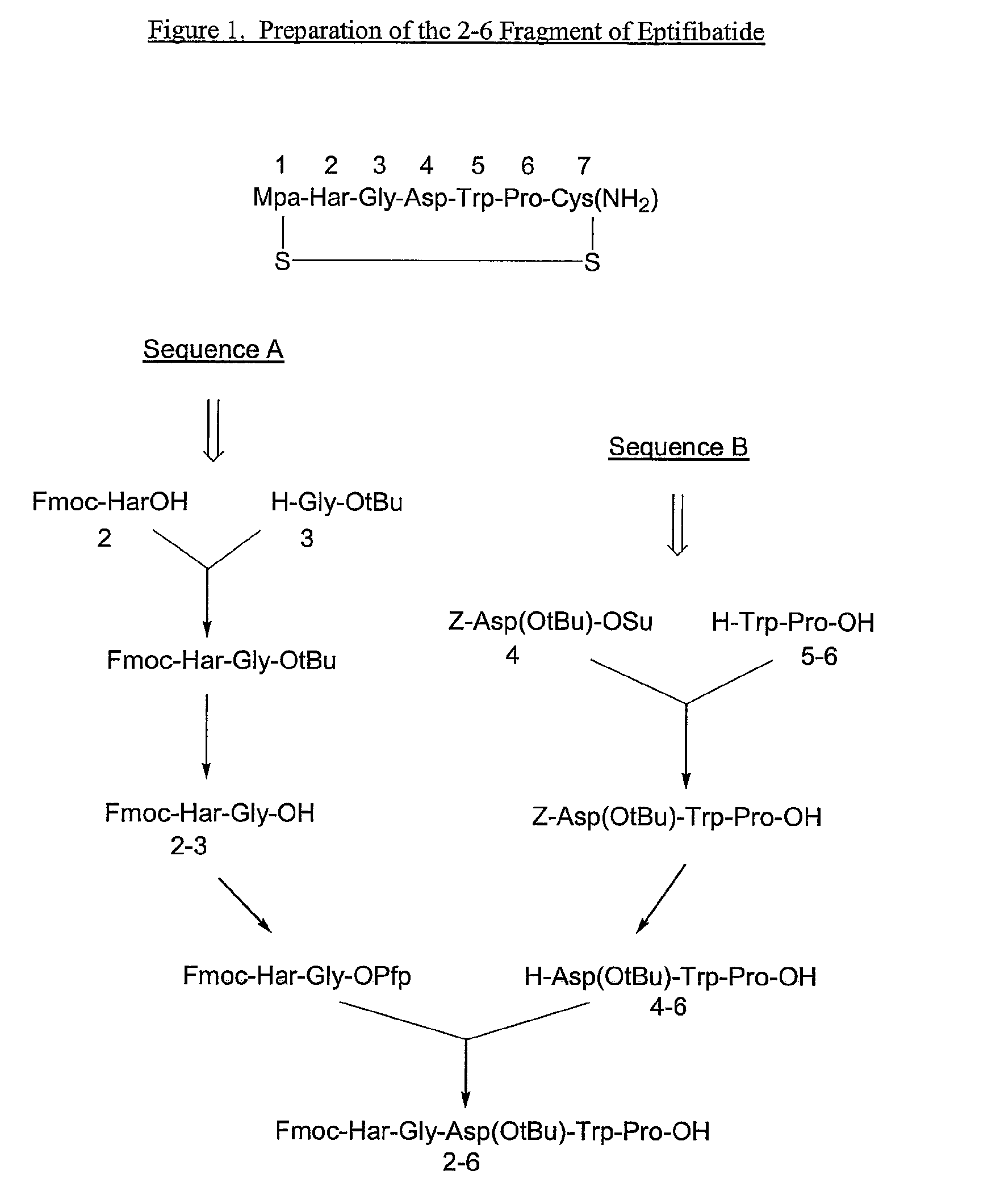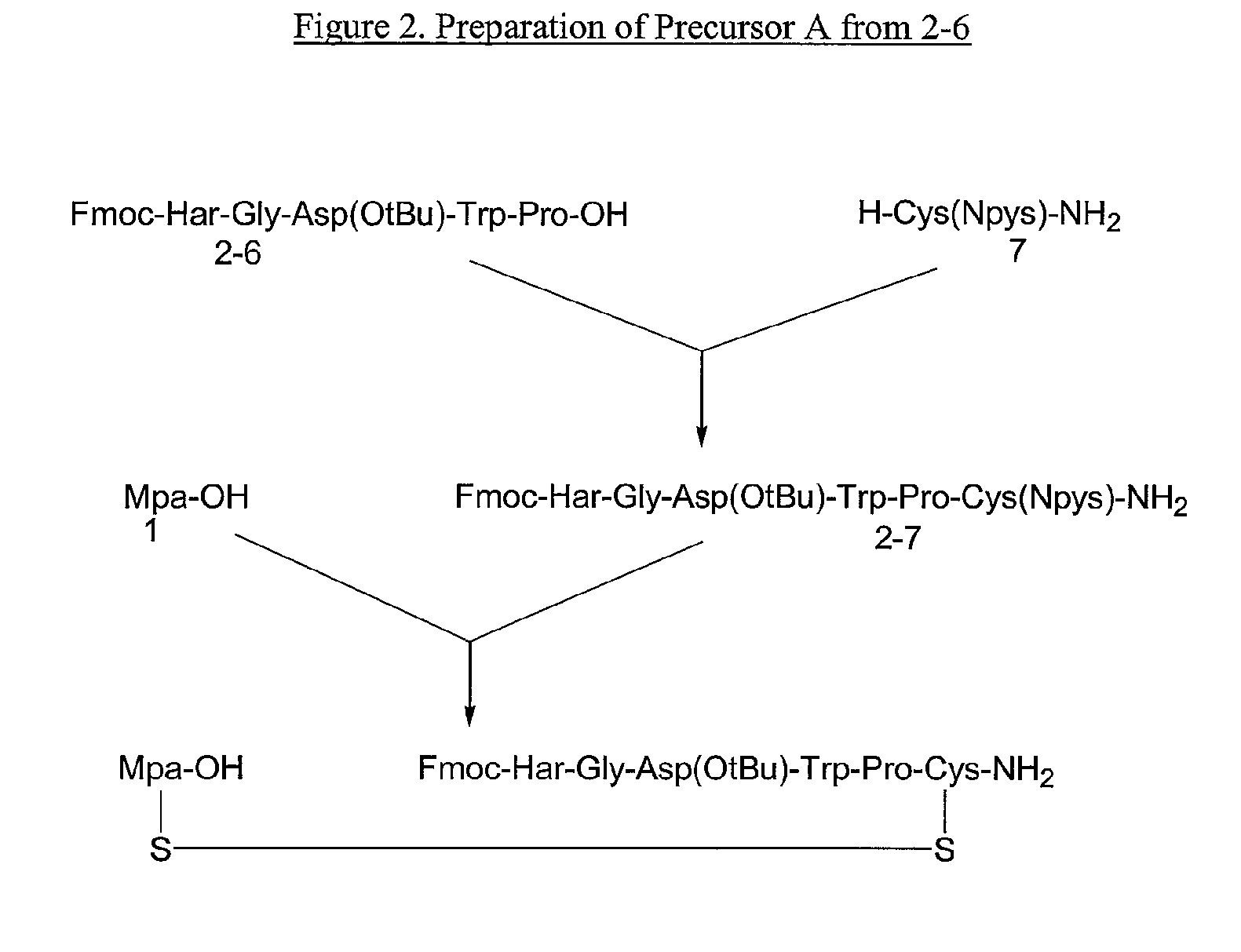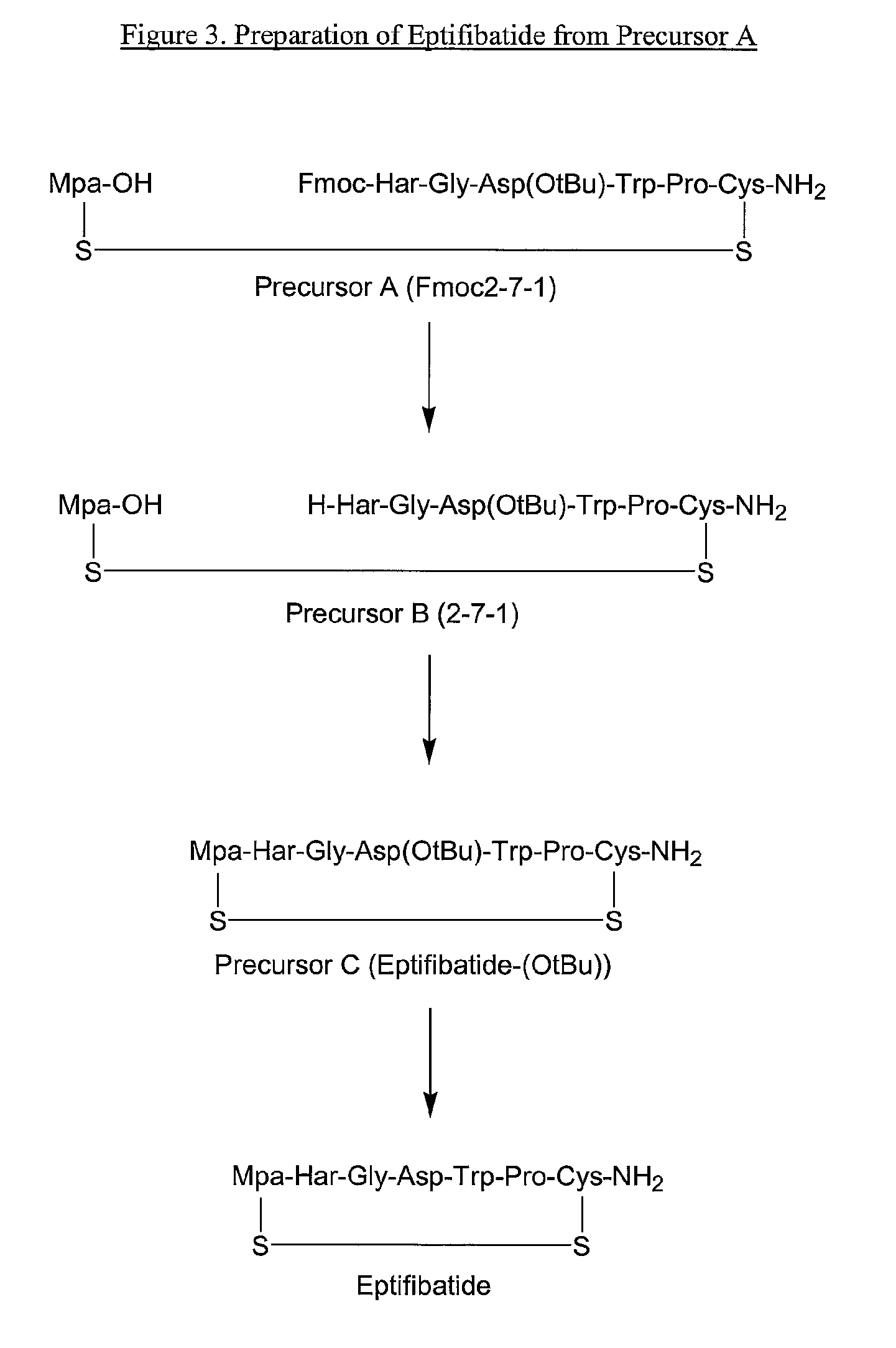Processes for preparing eptifibatide
a technology of eptifibatide and process, which is applied in the field of process for preparing eptifibatide, can solve the problems of large-scale liquid phase process challenges, myocardial infarction (heart attack), and inability to stabilize angina
- Summary
- Abstract
- Description
- Claims
- Application Information
AI Technical Summary
Benefits of technology
Problems solved by technology
Method used
Image
Examples
example 1
Preparation of Z-Asp(OtBu)-Trp-Pro-OH
[0060]Z-Asp(OtBu)-Trp-Pro-OH was obtained by known procedures starting with the commercially available Z-Asp(OtBu)-OSu and H-Trp-Pro-OH as described, for example, in Bodanszky, M. (1979), Active esters in peptide synthesis, The peptides, Vol. 1 (ed. E. Gross and J. Meienhofer), Chapter 3. Academic Press, London, which is incorporated herein by reference in its entirety.
example 2
Preparation of H-Asp(O-tBu)-Trp-Pro-OH
[0061]To a 2 liter reactor charged with dimethylacetamide (DMAC, 1.2 L) at a temperature of about 20° C. was added 0.300 kg of starting material Z-Asp(OtBu)-Trp-Pro-OH, maintaining the temperature at about 20° C. The Z-Asp(OtBu)-Trp-Pro-OH was allowed to dissolve and the reaction mixture was then purged and blanketed by a nitrogen atmosphere. Palladium on carbon (5 weight %) (0.015 kg) was added to the reaction mixture, followed by hydrogenation at a 2 bar pressure while the reaction mixture was maintained at about 20° C.
[0062]After two hours, and every hour thereafter, a sample from the reaction was analyzed by HPLC. HPLC analysis was conducted on Purospher Star C18 55*4 mm column with a water / acetonitrile solvent mixture containing 0.1% trifluoroacetic acid (TFA) with a gradient of 98:2 water / acetonitrile to 2:98 water / acetonitrile in 10 minutes. HPLC detection was at 215 nm, flow was 2.0 mL / min, and the temperature was 40° C.
[0063]The reactio...
example 3
Preparation of Fmoc-Har-Gly-Asp(O-tBu)-Trp-Pro-OH (SEQ ID NO:8)
[0068]To a slurry of Fmoc-Har-Gly-OH (0.163 kg net ; based on peptide content: 90.5%) in THF:DMAC (0.717 L and 0.179 L respectively) was added methanesulfonic acid (0.027 L) and pentafluorophenol (0.083 kg). The mixture was stirred at about 20° C. until the solid dissolved. N-ethylmorpholine (NEM) (0.030 L) was added drop wise, followed by dicyclohexylcarbodiimide (DCC) (0.072 kg) in THF (0.179 L) and the mixture was stirred at about 20° C. The formation of Fmoc-Har-Gly-OPfp was followed by HPLC assay. After about 17 hours, the ratio of Fmoc-Har-Gly-OH / Fmoc-Har-Gly-OPfp was 1.5 / 98.5.
[0069]To the reaction mixture was added H-Asp(O-tBu)-Trp-Pro-OH (0.146 kg, about 3.5 w / w % H2O) and NEM (0.049 L). The mixture was stirred at about 20° C. for 3 hours. At that time, HPLC analysis showed the mixture to contain about 87% of product, <2% Fmoc-Har-Gly-OPfp, 6% of Fmoc-Har-Gly-OH, about 0.5% of H-Asp(O-tBu)-Trp-Pro-OH, and about 5...
PUM
| Property | Measurement | Unit |
|---|---|---|
| temperature | aaaaa | aaaaa |
| temperature | aaaaa | aaaaa |
| temperature | aaaaa | aaaaa |
Abstract
Description
Claims
Application Information
 Login to View More
Login to View More - R&D
- Intellectual Property
- Life Sciences
- Materials
- Tech Scout
- Unparalleled Data Quality
- Higher Quality Content
- 60% Fewer Hallucinations
Browse by: Latest US Patents, China's latest patents, Technical Efficacy Thesaurus, Application Domain, Technology Topic, Popular Technical Reports.
© 2025 PatSnap. All rights reserved.Legal|Privacy policy|Modern Slavery Act Transparency Statement|Sitemap|About US| Contact US: help@patsnap.com



